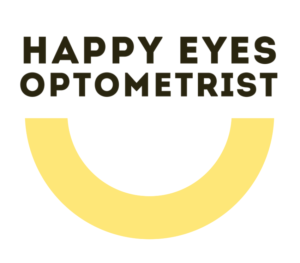Clear, comfortable near vision—at every stage of life
Presbyopia is a normal, age-related change where the eye’s lens becomes less flexible, making near tasks (reading, phone, labels) harder to focus. It typically starts to show between 40–45 years and gradually progresses.
Who is affected?
- Adults 40+ — everyone develops some level of presbyopia with age
- Busy professionals & readers — near work and screen time reveal symptoms earlier
- Contact lens wearers — may notice they’re holding things farther away or removing lenses to read
Presbyopia is different from hyperopia (long-sightedness). Many people have both, so an eye exam is the best way to tailor correction.
Signs & symptoms
- Blurry near vision (menus, phone, fine print)
- Holding reading material farther away
- Eye strain, headaches, or fatigue with near tasks
- Needing brighter light to read comfortably
- Switching between multiple pairs of glasses
Why an eye exam matters
A proper assessment ensures you get the right correction and helps rule out other causes of near blur (e.g., uncorrected astigmatism, dry eye, early cataract). We also check overall eye health and discuss your work, hobbies, and screen habits so your solution matches real life.
Treatment options we tailor to you
Glasses
- Multifocal/Progressive lenses – seamless distance-to-near vision for all-day wear
- Office/Occupational lenses – wider intermediate & near zones for computer and desk work
- Readers (single-vision near) – simple option for dedicated close tasks
- Anti-reflection & blue-control options – comfort for screens and night driving
New to progressives? A short adaptation period is normal—we’ll guide fit, measurements, and posture tips.
Contact lenses
- Multifocal contacts – clear vision across distances without readers
- Monovision – one eye set for distance, the other for near (carefully trialled)
- Available in daily, fortnightly, and monthly schedules from leading brands (CooperVision, Johnson & Johnson ACUVUE®, Alcon)
Combined strategies
- Contacts for day + slim readers for fine print
- Work-specific glasses + casual multifocals for evenings/weekends
Everyday tips
- Use good lighting for close work
- Follow the 20-20-20 break rule for screens
- Keep an updated prescription—presbyopia changes over time
- Manage dryness (blinking, lubricants) if near tasks feel tiring
What to expect at your appointment
- Vision & prescription check (distance, intermediate, near)
- Lifestyle discussion (workstations, hobbies, screens)
- Lens strategy (glasses and/or contacts) tailored to your needs
- Precise measurements & fitting for comfortable, natural vision
- Follow-up to fine-tune if needed
